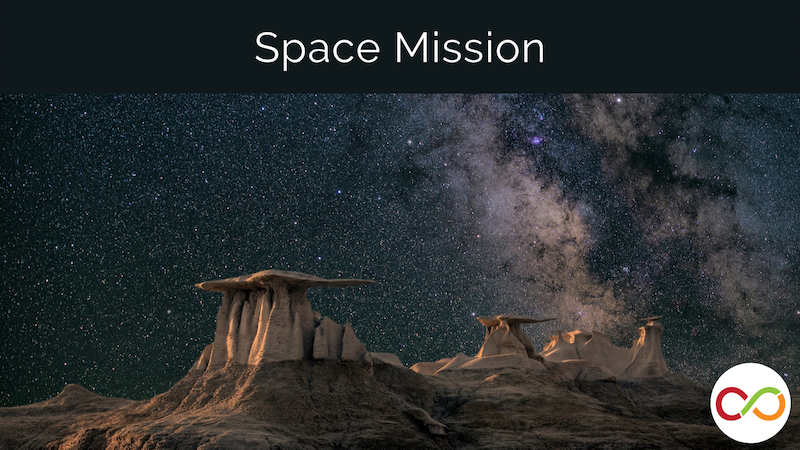Space Mission
Junior (Age 9 – 12)
Curriculum Goal
Grade 6: Understanding Earth and Space Systems
- Assess the impact of space exploration on society and the environment.
- Investigate characteristics of the systems that earth is a part of, as well as the relationship between the earth, the sun, and the moon.
- Demonstrate an understanding of the components of the systems that the earth is a part of, and explain the phenomena that result from the movement of different bodies in space.
Context
- Students should have basic knowledge of the planets in the solar system.
Materials
- Books on the solar system, space flight, sustaining life
- Poster board or paper and markers
Lesson
- Introduce the characteristics of the moon. What is the gravity on the moon? What is the temperature during the day and night? How long does a year last?
- Co-create a model for a theoretical mission to the moon. Consider the following:
- What do the astronauts need to survive? Can they find these things on the moon or do they have to take it with them? (water, oxygen, food, etc.)
- If not, is there any technology that can create these conditions or resources? (some examples could be oxygen generators or plant incubators).
- How long would it take to get the moon? What trajectory would be best?
- What are possible drawbacks on this mission? Consider cost, time, safety.
- Outline different perspectives on space exploration and ask for the students’ perspectives. Some examples:
- Investing money on space exploration helps us understand where we come from and the universe around us.
- Space exploration is very expensive. The money may be better invested in areas such as health care, education.
- Launching rockets uses a lot of fuel and can cause a lot of air and sound pollution.
- Technology developed for space exploration can be used in other fields, such as medicine or computing.
- Break students into smaller groups. Each group will choose one of the solar system’s eight planets to come up with a proposal for a mission to go visit that planet.
- Ask students to consider these three main points for their mission proposal:
- Physical characteristics of the planet (water, composition, gravity, colors, day/night, temperature, seasons, distance from the sun, number of moons).
- Ability to sustain life (What will be required to stay alive on the planet? Does the planet provide anything that is needed to sustain life? Can technology be used to create life sustaining conditions?).
- Flight plan (flight time, trajectory, launch time range).
- Each group will create posters with information on their planet and the mission, outlining the pros and cons of going to explore this planet.
- Students present their proposal to the class, ending with a recommendation on whether this mission should take place or not.

Look Fors
- What characteristics do students indicate as most important for sustaining life on the planet?
- Are students able to compare the properties of their selected planet with the familiar properties of the Earth?
- How are the students weighing the benefits of space exploration against other factors? (Examples: high cost and danger to the astronauts vs. knowledge and science developments).
Extension
- Students imagine an imaginary ninth planet. They must decide what it would look like at a particular location in our solar system based off the learnings from the group presentations.
- Students can focus on size, composition, temperature, number of moons, possible rings, distance from the Sun, time to orbit the Sun, seasons, possibility of life, or any other properties that interest them from previous conversation.
- Students draw their imaginary ninth planet and explain its characteristics/location in the solar system based on information from the other planets.
Share this lesson
Share on facebook
Share on twitter
Share on email
